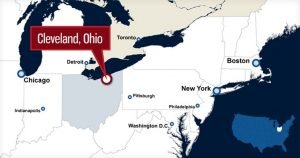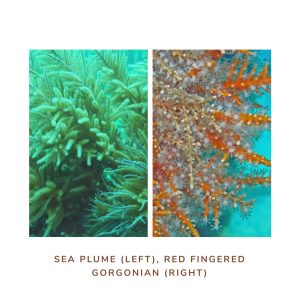Best Places to Dive? We Know a Few
 Scuba diving and Cleveland, Ohio . . . sort of go together like peanut butter and monkey wrenches, right? I challenge you to find one of those “101 Places to Dive Before You Die” books with a cover that isn’t turquoise, tropical and filled with colorful reef fish. And yet Cleveland has its own extensive dive community. Lake Erie, the shallowest of the Great Lakes, has hundreds of shipwrecks to explore and is serviced by several dive shops that teach classes, sell gear, and organize trips all over the world. Northeast Ohio is home to around 4.5 million people and an untold amount of scuba divers who love to explore the waters in their own backyard as well as adventure to distant places to see what there is to see in the 70% of our planet that is underwater.
Scuba diving and Cleveland, Ohio . . . sort of go together like peanut butter and monkey wrenches, right? I challenge you to find one of those “101 Places to Dive Before You Die” books with a cover that isn’t turquoise, tropical and filled with colorful reef fish. And yet Cleveland has its own extensive dive community. Lake Erie, the shallowest of the Great Lakes, has hundreds of shipwrecks to explore and is serviced by several dive shops that teach classes, sell gear, and organize trips all over the world. Northeast Ohio is home to around 4.5 million people and an untold amount of scuba divers who love to explore the waters in their own backyard as well as adventure to distant places to see what there is to see in the 70% of our planet that is underwater.
“What is your favorite place to dive?” is usually the first question posed to a diver. Could there be a better place to ask that question than of the staff at Greater Cleveland Aquarium? Not to toot our own horn, but we pack a ton of dive experience into the historic Powerhouse.
The Aquarium currently has 25 divers on staff; that’s not just the dedicated dive team members but also diver-certified aquarists, Life Support Systems staff and some of the Guest Experience folks regularly answering your animal questions. The numbers are dizzying. We did 1,265 dives in 2022 totaling 99,162 minutes. That’s almost 69 days or 10 weeks underwater. We could have watched Avatar: The Way of Water 5,204 times last year!
The Aquarium team has logged 22,246 dives since the downtown venue’s doors first opened in 2012 through the end of 2022, and we have well over 300 already this year. In fact, there’s a good chance that someone is underwater at the Aquarium as you read this blog post.
Best places to dive? Yeah, we have a few. I asked around and started a list. What follows will be a series of ten dive locations around the world as recommended by our team. Some are tropical, some feature shipwrecks and one is even under ice.
We hope that the discussion stirs a passion in everyone to explore the world while you can. There’s so much to experience and we love to talk about all the curiosities we’ve seen underwater. I think I speak for all the staff here when I say that we advocate for the protection of the species and environments that we’ve seen firsthand and feel there’s no better way to learn and love what’s out there than diving in and encountering it, face-to-face. I’ve been diving since 2017 and have been a Greater Cleveland Aquarium diver since 2018. I have more than 1,000 dives here and 65 or so out in the world, including the Florida Keys, Bahamas, Honduras, Niagara River, Tobermory and Greece.
So, if you see someone at the Aquarium and you’re curious, don’t be shy. We love to talk diving and follow this blog series to add some of our recommendations to your “must-experience list.”
-Ray D.









